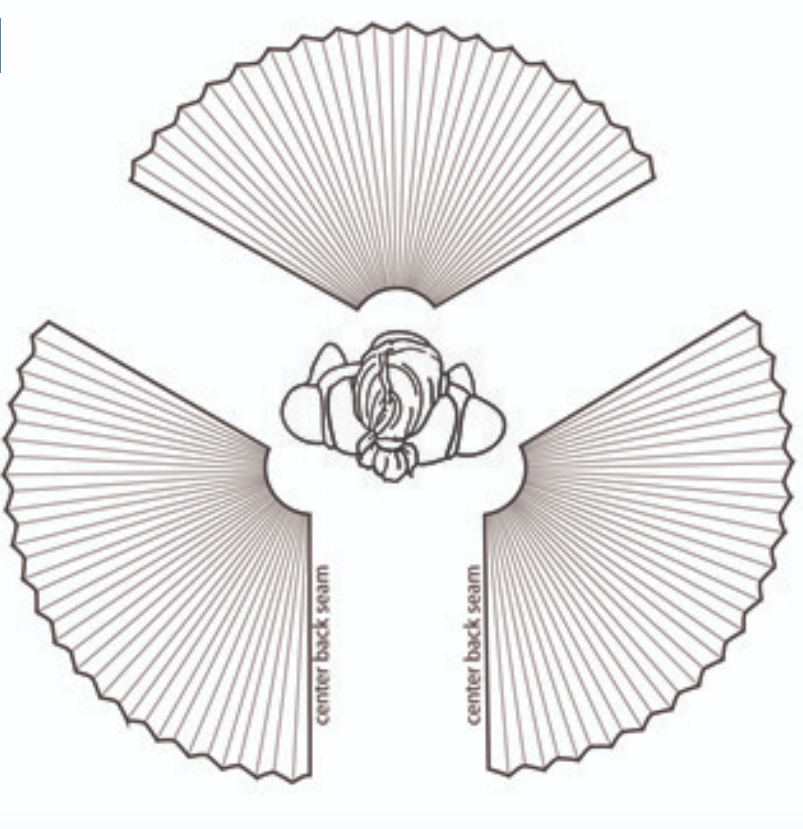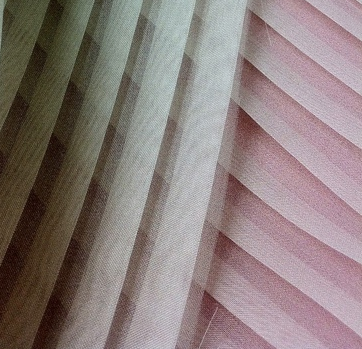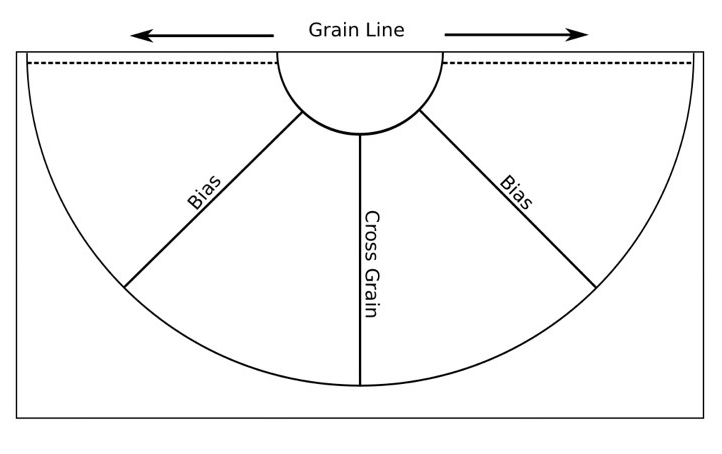
Circle Skirts, Panels, and Pleating
A question I am often asked is: “How many yards of fabric do I need to make a sunburst pleated circle skirt?”
When I start to discuss the concept of panels, people are often unable to follow me.
For a bias circle skirt, one panel is the equivalent of a half circle (see Figure 1). This is the same for both pleated and non-pleated circle skirts. For sunburst pleating, the panels must be cut before the fabric can be pleated. Whether you decide to use one, two, three, or more panels will depend upon your desired look. The kind of fabric used and the fullness you want the skirt should also be considered.
The images below will illustrate these concepts:
In Figure 1, the skirt is made using one panel, which is appropriate for heavier fabrics such as wool.
In Figure 2, there are two panels which create a typical full circle skirt commonly made with chiffon and other flowing fabrics. Keep in mind that you are not limited to two half-circle panels to create a bias circle skirt.
Figure 3 illustrates how three panels (1.5 circles) can be used.
It has been my experience that three panel skirts provide the best look with sunburst pleating. For our couture clients, it is not uncommon for us to use up to nine panels for a single gown.




